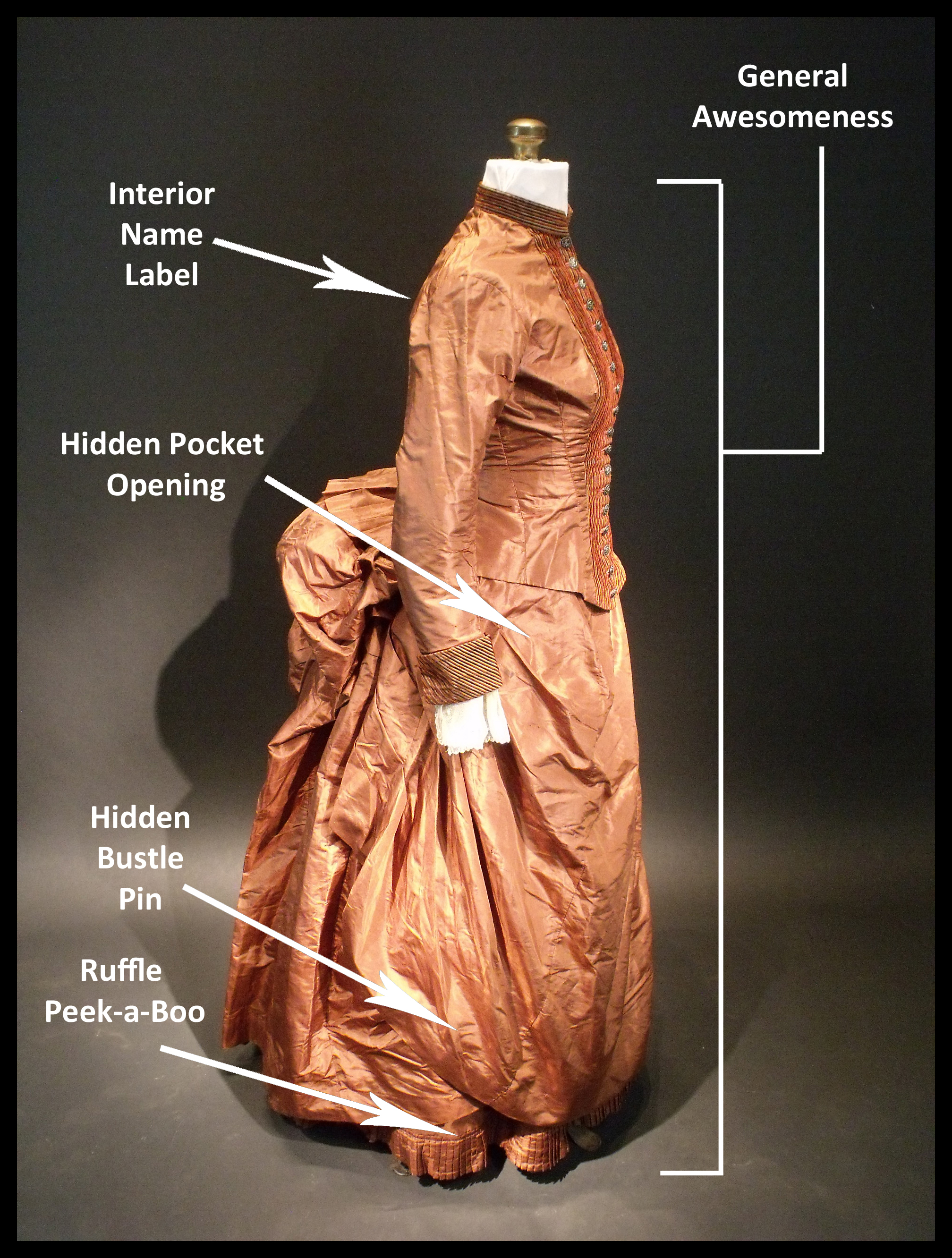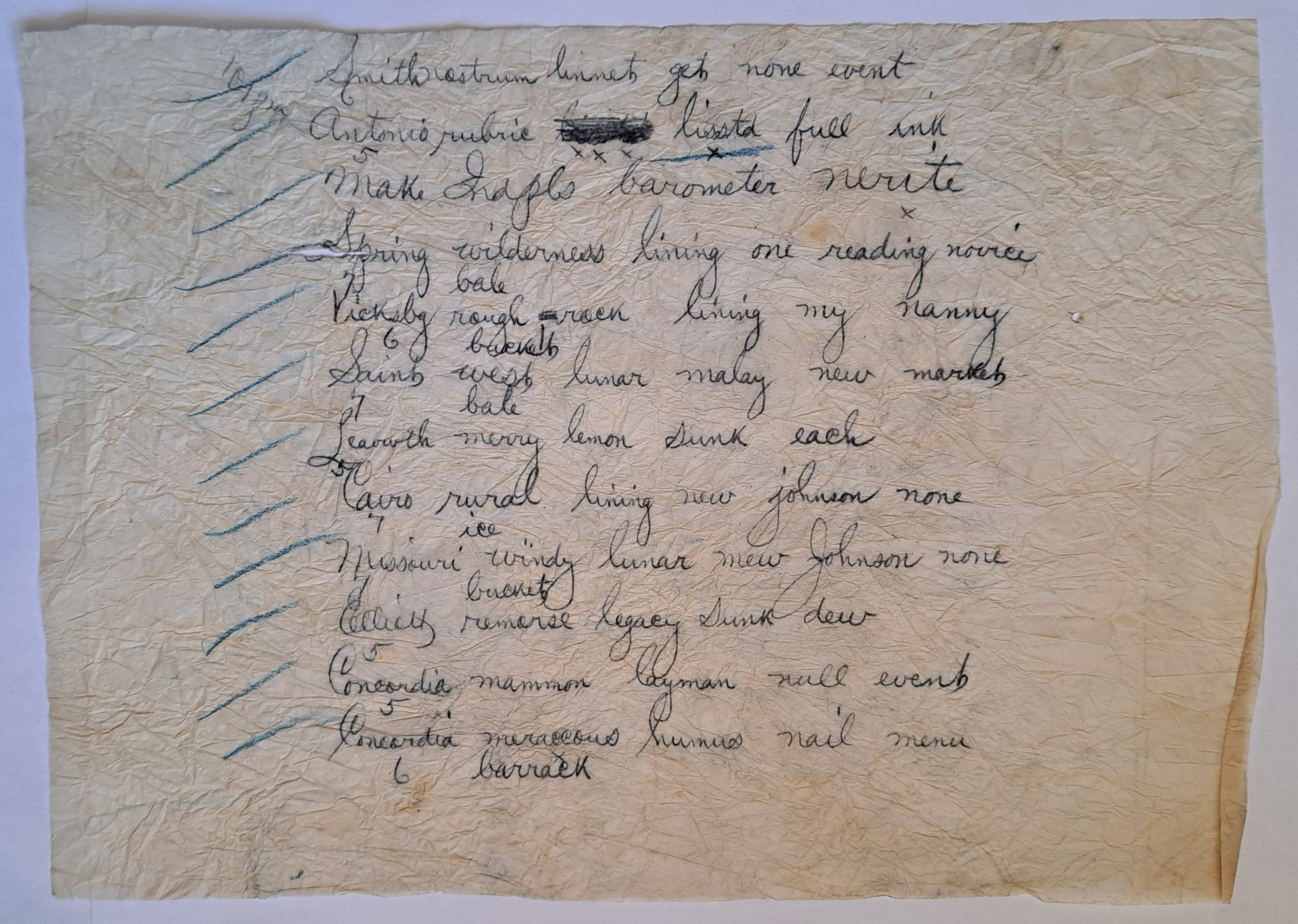Imagine this: you go into a vintage clothes store and buy a Victorian-era costume only to find it hides a heavily encrypted message that can’t be deciphered. We’ve all been there, right?
Well, this was actually the reality for Sara Rivers-Cofield, an archaeological curator who bought a 19th-century silk dress from an antique mall in Maine in 2013. For 10 years the code hidden in the dress defied efforts to crack it, but now a researcher has not only solved it, but has also pinpointed the exact day it was probably written.
The case of the silk-dress cryptogram
According to Rivers-Cofield’s blog post, the two-piece bronze colored dress likely dates to the mid-1880s. But while such finds are not unusual for those seeking vintage clothing, what she found inside the dress was beyond unusual. The dress had a secret pocket sewn into a hard-to-reach spot that could only be accessed “through an inconspicuous slit in the over-skirt,” Rivers-Cofield explained.
“[T]his pocket opening is completely concealed by the over-skirt; as in, you have to hike up the draped silk, expose the cotton under-skirt, and generally disrupt the whole look to get at the pocket.”

The anatomy of a mysterious dress and its many secrets.
Image courtesy of Sara Rivers-Cofield
Inside the pocket was a scrunched-up ball of papers that had around two dozen lines of incoherent text. Examples of the text include phrases like “Bismark Omit leafage buck bank” and “Paul Ramify loamy event false new event.”
It was clearly a coded message, but what did it mean?
For a decade, various sleuths, amateur and professional codebreakers alike tried to tackle this crumpled mystery, but to no avail. The baffling messages, known as the “silk-dress cryptogram”, were so infamous that they were ranked among the top 50 unsolved codes and ciphers in the world. But someone has finally undone the fancy dress of this message, and its secrets are now laid bare.
A mystery solved
Wayne Chan, a computer analyst at the University of Manitoba, Canada, has cracked the code and has also identified the most likely day that it was created.
“When the Silk Dress cryptogram was first published online, theories abounded about the content of the mysterious messages. Were they secret spy messages? Did they relate to illicit gambling?” Chan wrote in the newly published paper.
The answer is admittedly more mundane than any of the speculation, but it is still pretty cool.

This is page one of the mysterious code.
Image courtesy of Sara Rivers-Cofield
It turns out the message actually concealed meteorological observations recorded in a telegraphic code that was used by the United States Army and Weather Bureau at this time. Telegram messages were not cheap, and every word could cost several dollars, so this was a cost-effective way to communicate information about city forecasts without breaking the bank.
“The weather observations decoded in the Silk Dress cryptogram represent an era in which the telegraph played an instrumental role in advancing the state of operational meteorology,” Chan explained.
“For the first time in history, observations from distant locations could be rapidly disseminated, collated, and analyzed to provide a synopsis of the state of weather across an entire nation and to allow regional weather forecasts to be made.”
Interestingly, this code was only used by a select group of government officials who used it to create national weather maps.
According to Chan, the code itself was adopted in 1887 and developed by Chief Signal Officer, A.W. Greely. The code allowed users to communicate a full report with an average of six words, which was extremely efficient. The code could also be read on sight by someone trained to do so, which was also a departure from previous codes that were more complex.
“New weather codebooks were published every few years, sometimes with significant revisions,” Chan adds. “Between 1888 and 1900, editions were published in 1889, 1892, and 1896, with the latter two codebooks being published by the U.S. Weather Bureau, which had taken over from the Signal Service in 1891.”
The codebook is available here for anyone wishing to unravel the mystery themselves.
While Chan’s work has revealed what the message says, by examining national weather data from the US and Canada for the conditions described, he was also able to identify the day it was most likely written: May 27, 1888. However, many questions surrounding this story remain unanswered.
For instance, who was the person who wrote it? Why did they have to hide the information in such an elaborate way? Did a bronze-coloured dress suit their complexion?
The latter two mysteries may never be answered, but Chan has gone a long way to attempt to puzzle out the first one.
It is likely that each local forecast was collected at a War Department telegraph room in Washington, DC, where there were no women employed as operators. However, they did hold positions as clerks, copyists, typists, or book stitchers.
“It is therefore quite possible that the clerical staff may have handled the coded messages and that the owner of the dress could have been among them,” Chan reasons.
The dress has “Bennett” identified on a name tag. We know that a “Miss Mary C. Bennett” was employed as a voluntary weather observer in Fairview, Fulton County, Illinois at the time, thanks to the 1888 Signal Service annual report. So, could this be the mysterious owner of the dress?
For now, it remains undetermined, but Chan did identify something interesting. The date of the weather observations in the coded message were actually recorded on Mary Bennett’s birthday. Coincidence? Probably, but that’s still really fun.
The study is published in Cryptologia.
Source Link: The Case Of The "Silk-Dress Cryptogram" Has Been Solved, But Many Questions Remain Unanswered